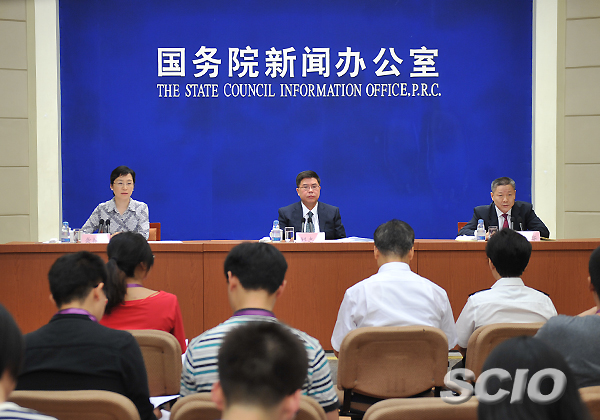Excerpts from State Council policy briefing on May 26
Shantytown redevelopment and the integrated customs clearance mechanism were two topics highlighted at the State Council's policy briefing on May 26.
|
|
| The State Council Information Office hosts a routine policy briefing on shantytown redevelopment and the integrated customs clearance mechanism on May 26. [Photo/China SCIO] |
Shantytown redevelopment achievements
According to Lu Kehua, vice-minister of Housing and Urban-rural Development, the government set goals to renovate 18 million housing units in shantytown areas from 2015 to 2017. From January to April this year, China had completed 36 percent of that goal by starting construction on 2.19 million housing units.
The government built 6.06 million new homes for shantytown redevelopment, 60,000 more than last year's target. In 2015, that number was 6.01 million.
Over the past eight years, the campaign achieved fruitful outcomes and set good practices. From 2008 to 2016, the housing units involved in the nationwide shantytown renovation accumulated to 32.87 million, benefiting over 80 million residents.
The campaign also further promoted people-centered urbanization and boosted coordinated development between old and new urban areas.
Relocated families got compensation in monetary form, especially in third- and fourth-tier cities, to help sell inventory of residential complexes.
Meanwhile, shantytown renovation facilitated the consumption and investment in construction fields, which stabilized economic growth.
Measures to accelerate shantytown renovation
For the renovation work for 2018 to 2020, the government will adopt several measures to improve quality and speed in new redevelopment projects on par with the last phase.
Amenities and public services such as schools and hospitals will be improved to ensure construction quality, supporting facilities and housing allocations.
Supportive policies will also be strictly implemented to grant stronger support in funding, financing and adequate supply of land for the shantytown redevelopment program for 2018 to 2020, to build 15 million new homes for about 100 million people living in shantytowns and urban villages.
More relocated families will also get compensation in monetary form during the redevelopment work.
Meanwhile, fund management will also be strengthened to control costs as local governments will be urged to make the best of earmarks and prevent embezzlement.
Nationwide customs clearance sees progress
Since the General Administration of Customs launched the pilot program in June 2016, nationwide integration of customs clearance has seen great progress.
All government departments have integrated nearly all their work relating to customs clearance and the "single-window system" has been initiated in 17 provinces and municipalities, Zou said.
International coordination has had a remarkable effect, as part of efforts to the Belt and Road Initiative. Also, with stronger inspections and joint rewards and punishment mechanism, the credit system improved and the business environment relaxed.
Zou said the following tasks include carrying out the "single-window system" in all ports nationwide by the end of the year, setting up an information-sharing platform, and promoting paperless work. Strengthened supervision and risk control in cargo clearance will be one of the highlights.
Joint law enforcement and trans-department and region coordination will also be promoted to help ease procedures. New technologies will be introduced, and unreasonable fees will be cut to ease burdens enterprises face.
China is almost set to spread nationwide integration of customs clearance in 2017, Zou said.
Customs clearance reform benefits enterprises
By setting up two centers for risk control and taxation, policies and requirements which varied in different regions will be unified.
Instead of dealing with all customs formalities when declaring, the reform stressed that cargo can be cleared as long as basic information review is done, and the remaining formalities can be processed afterward, saving time.
Tax collection and administration modes have been changed. Enterprises can now practice voluntary declaration without customs administration review, and authorities conduct random checks, a measure to reduce cargo's detention time.
Save time for customs clearance
An inter-ministerial meeting under the State Council rolled out measures in April to enhance efficiency and save time for customs clearance.
The measures include promoting paperless processing of customs clearance, enhancing automation in customs clearance for workload reduction in unpacking and decreasing regulatory links.
Also, efforts will be made to promote international coordination in customs clearance, optimize human resource distribution, and promote openness, supervision and assessment in customs clearance.
